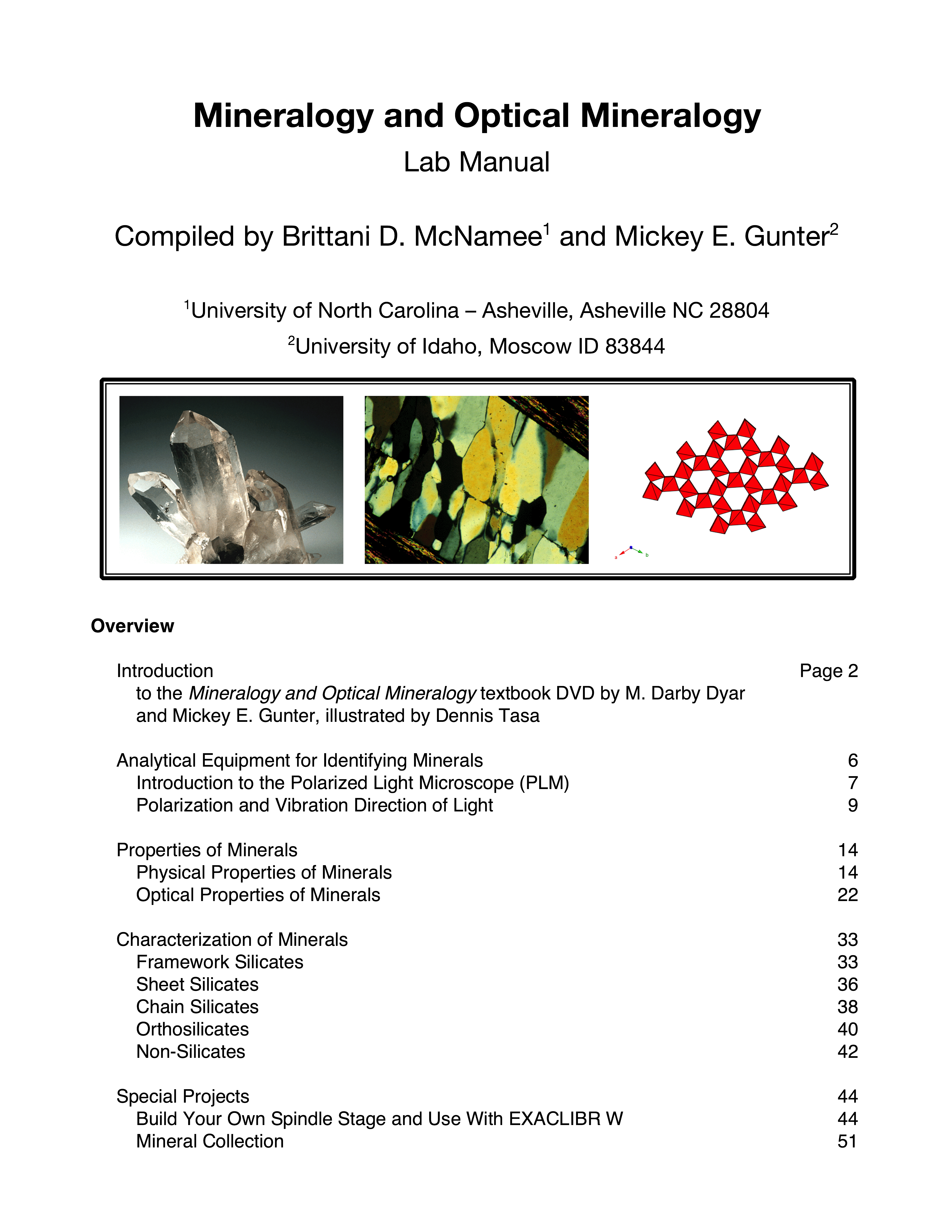Mineralogical Society of America, Founded December 30, 1919

These are publications made freely available by either the author, a funding organization, or MSA. MSA will host additional open access publications about mineralogy, crystallography, petrology, and geochemistry that it believes to be of interest to its membership. If you have a publication you would like to post on this site, please contact the MSA Business Office.

Mineralogy and Optical Mineralogy Laboratory Manual
Brittani D. McNamee, University of North Carolina at Asheville and Mickey E. Gunter, University of Idaho (2014) 51 pages.
The major goal of this laboratory manual is to teach students how to identify minerals. As such, we developed a lab manual integrated closely with the textbook and DVD by Dyar and Gunter (2008) illustrated by Dennis Tasa, with focus on the authors' "Big Ten" minerals. This lab manual puts more emphasis on understanding the relationships between a mineral’s structure and composition with its properties and the procedure in identifying minerals than memorizing a hundred minerals. The manual acts as a skeleton to build upon as the instructor sees fit, allowing the addition of mineral samples and exercises.
Labs concentrate on four topics: 1) analytical equipment, 2) physical and optical properties, 3) mineral identification, and 4) special projects. The first two labs introduce the students to the different instruments used for mineral identification: 1) a tour of the X-ray diffractometer (XRD) and a scanning electron microscope (SEM) facilities with brief explanations of the concepts driving them and 2) an introduction to the polarizing light microscope (PLM). The next section of labs focuses on defining and learning the techniques to identify the physical and optical properties of minerals. Lab exercises begin with students comparing the properties of two or three different known minerals and then lead to observing the properties of and identifying an unknown mineral using the DVD’s mineral database. The students then apply their knowledge of mineral properties to the "Big Ten" minerals divided into labs by class (framework silicates, sheet silicates, etc.). Students use the DVD database and lab materials to observe and measure the properties of the minerals and to build their own mineral lab manual, which they can later use in Petrology. The pages in the manual can either be printed, or the students can fill them in electronically. The semester ends with two projects: 1) building a spindle stage and using it with the EXCALIBR program to expand the student’s understanding of optical properties of minerals and to aid in mineral identification and 2) assemble a collection of 20 minerals that must be identified by the students using the techniques and resources learned over the semester.
Download Mineralogy and Optical Mineralogy: Lab Manual, no cost